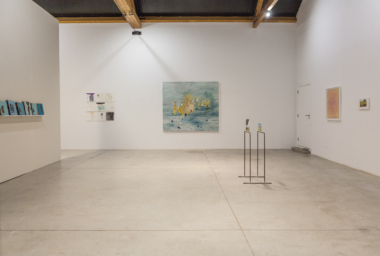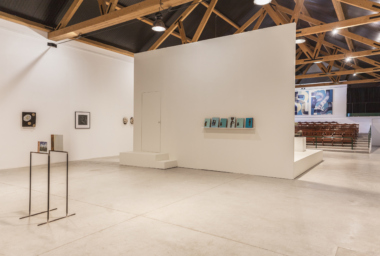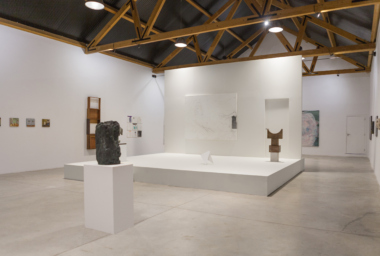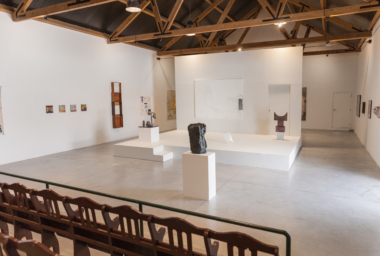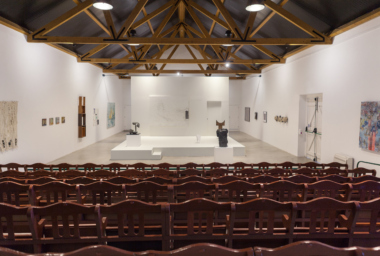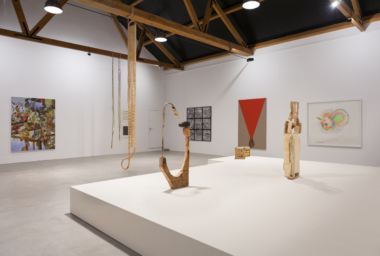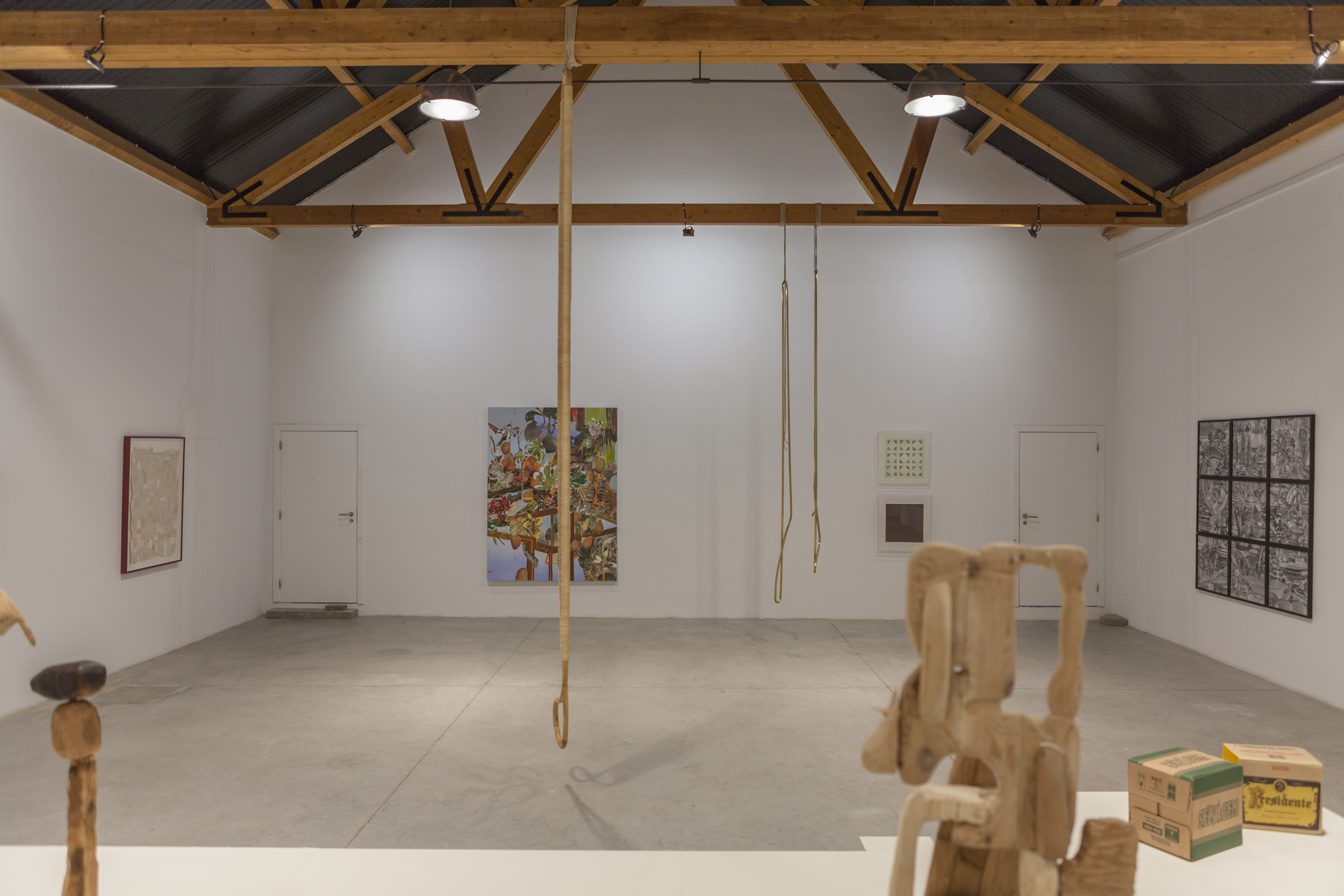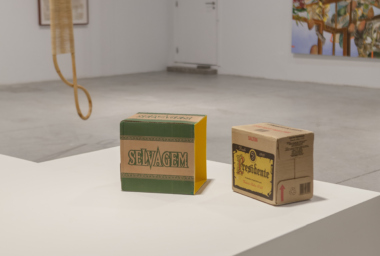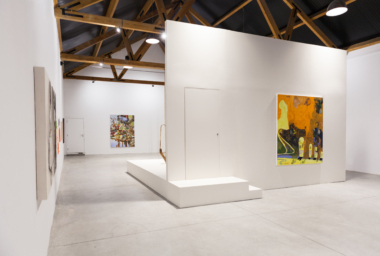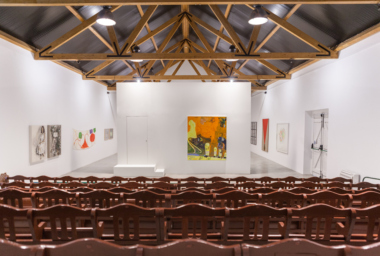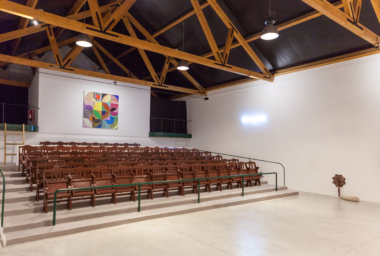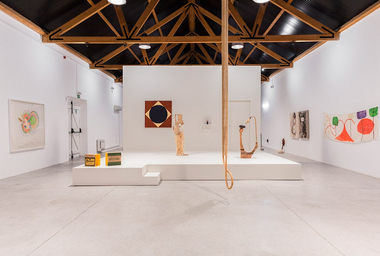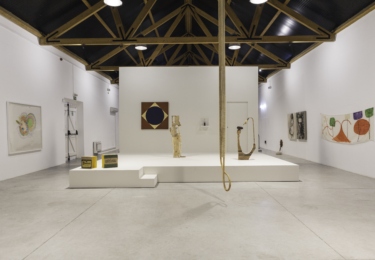
O Canto do Bode
Jun 29 – Aug 29, 2021
Casa da Cultura de Comporta
R. Do Secador 8, Comporta, Portugal
First Act: 29 June — 25 July
Second Act: 29 July — 29 August
Visiting hours
Tue-Sat: 11am — 1pm | 5pm — 9pm
Sun: 11am — 1pm | 5pm — 8pm
Architecture design by João Maria Gusmão
Special project
Download
Leonor Antunes | Juan Araujo | Anderson Borba | Panmela Castro | Alexandre da Cunha | Caetano de Almeida | Edu de Barros | Arnaldo de Melo | Daniel Fagus Kairoz | Marcius Galan | Fernanda Gomes | Sheroanawe Hakihiiwe | Lucia Laguna | Manata Laudares | Tonico Lemos Auad | Laura Lima | Kim Lim | João Loureiro | Robert Mapplethorpe | João Maria Gusmão | Cildo Meireles | Ernesto Neto | Rivane Neuenschwander | Dalton Paula | Jorge Queiroz | Mauro Restiffe | Marina Rheingantz | Marina Saleme | Julião Sarmento | Rebecca Sharp | Tadáskía | Janaina Tschäpe | Erika Verzutti | Pedro Victor Brandão | Luiz Zerbini | Michel Zózimo
Fortes D’Aloia & Gabriel, Galeria Luisa Strina and Sé are pleased to announce O Canto do Bode [The Song of the Goat], a collaborative exhibition at the Casa da Cultura da Comporta, in Portugal. Three Brazilian galleries from different generations join global initiatives in building new working models in an unprecedented context for the art circuit. 32 artists represented by the galleries, in addition to 4 guest artists, will occupy a former cinema within the historic Casa da Cultura, at the Herdade da Comporta Foundation, which becomes a pop-up gallery in the European summer.
The exhibition takes place in two acts and is structured like a play, with architecture design by artist João Maria Gusmão, and a narrative that unfolds simultaneously in the audience, stage and backstage. The title refers to the Greek term tragoedia [tragos (“goat”) and oide (“song”) and celebrates the Brazilian tradition of sacralizing the profane and profaning the sacred, deconstructing the dichotomy between the Dionysian and the Apollonian.
In the proscenium, facing the audience, the suspended drumsticks in Alexandre da Cunha’s Slit IX (2019) define the first act’s cadence, on the beat of the erotic. Ernesto Neto’s new work Umbigo Ventre Fruto Arte [Belly Button Womb Fruit Art] (2021) also evokes rhythm and fertility. Sheroanawe Hakihiiwe incorporates colour and Yanomami oral tradition from El Alto Orinoco, Venezuela, its cosmogony and ancestry. Edu Barros’ painting calls upon the history of frescos and its relationship with spiritual ascension, whilst Jorge Queiroz’s post-symbolic world is revealed in his enigmatic painting.
At centre-stage, the works of Daniel Fagus Kairoz and Cildo Meireles call into question infamous moments in Brazilian political history. In The Weeping White Man and Word (both from 2020), invited artist Anderson Borba juxtaposes the practice of modernist sculptors and self-taught artists as a way of dealing with current issues. Leonor Antunes’ suspended sculptures use materials such as wicker and brass to create a visual choreography. In turn, Rivane Neuenschwander’s painting After the Storm (2021) suggests new topologies designed on paper soaked in tropical rain, followed by the empirical nature of Lucia Laguna’s luxurious painting. The reformulation of meanings from the material world permeates the entire exhibition and is also reflected in the works of João Loureiro, Manata Laudares and Pedro Victor Brandão.
Exploring the relationship between interior and exterior, both as places of imagination and representation, the second act opens the stage with Kim Lim’s historic works Narcissus (1959) and Caryatid (1961), showcasing her interest in ancient civilisation whilst activating the tension between ordered experience and the dynamic rhythm of organic forms. Rebecca Sharp’s pictorial and meditative practice reveals unusual and surreal scenes, and Marcius Galan’s Bandeirinha [Bunting] (2013) questions the metaphorical capacity of space and our relationship with it.
Abstract gesture confers materiality onto psychological tension in the paintings of Arnaldo de Melo and Janaina Tschopp, whilst Marujo [Sailor] (2020) by Marina Rheingantz suggests the reconstruction of a memory. Figurative representation emerges in the work of Panmela Castro, where she revisits the tradition of portrait by painting her contemporaries in the art and activism fields, as well as in the portrait by Dalton Paula who reinterprets black diaspora historic and cultural identities. The body appears as classical sculpture in Robert Mapplethorpe’s ballet photographs and odd three-dimensional shapes in João Maria Gusmão’s sculpture of a tattooed torso. In the works of Mauro Restiffe and Juan Araujo, palimpsests of architecture and art are suspended in the history of image, whilst vestiges of studio practice and remnants of an extemporaneous world come together in the works of Erika Verzutti and Fernanda Gomes.
In the staging of two exhibition acts, dialogues and synergies are established between artists from different generations who have followed different formal paths. O Canto do Bode [The Song of the Goat] unfolds its main plot – the possibility of bringing together voices that propose new joint narratives.
